

What is Pneumatic Isolation and How are Pneumatic Isolators Used?
In the testing industry, precision is the name of the game. Metrology ensures that all types of products, whether it be for transportation or medical use, are tested down to the finest details. Testing engineers across industries perform routine checks on vehicles, aircraft and more to ensure their safety, efficiency and overall quality.
Of course, as testing in any capacity is a sensitive process, the slightest variables lead to inaccuracy and frequent delays no matter the testing industry. It is essential that all outside influences be considered to ensure a testing environment free from any interruptions or issues. How do testing engineers go about this? It starts with pneumatic isolation.
What is Pneumatic Isolation?
In essence, pneumatic isolation is a specific form of vibration isolation. Vibration isolation is the process of isolating an object from the source of vibrations. This object can be anything from a vehicle to a piece of machinery or equipment.
As you might imagine, excess vibration is often unwanted across industries. Whether it be the railroad industry or the testing industry, untreated vibration may lead to inaccurate inspection results. Pneumatic isolation is a specific type of vibration isolation that is largely effective against low frequency vibration.
Pneumatic vibration isolation is ultimately the process of isolating an object from its environment by using pneumatic isolators. Also known as air isolators, these special devices create ideal conditions for testing equipment and heavy machinery for superior vibration isolation.
What are Pneumatic Isolators?
Using compressed air, pneumatic isolators maintain pressure in the “bladder” or “canister” portions of the device. This air chamber within the pneumatic isolator is sealed with a flexible diaphragm that, when pressurized, supports and isolates the payload.
Pneumatic isolators range in stiffness, but that is mostly due to the pressure and volume of an air column. Depending on the payload, pneumatic isolators will adjust their stiffness to accommodate the appropriate amount of pressure. In return, the payload is isolated from its surrounding environment.
Typically, pneumatic isolators work as part of a complete solution, or a turnkey solution, to properly isolate the payload. Several pneumatic isolators are put in place and connected to a central control panel that regularly monitors the pressure in the pneumatic isolators. A complete system ensures the best results for isolation and can accommodate large payloads like MRI machines and even airplanes.
But how does this system work? Where can you expect to see a pneumatic isolator in use?
How are Pneumatic Isolators Used?
Pneumatic isolators are used in a variety of industries for a wide breadth of applications. For the automotive and aerospace industries, pneumatic isolators are an essential piece for testing equipment. In precision tools for metrology and MRI machines, pneumatic isolators are used to ensure accurate inspection results by creating a vibration-reduced environment.

Pneumatic Isolators for Auto Testing
An integral part of a vehicle’s certification, new and old cars alike must undergo a series of routine tests to assess their safety and efficacy. In an industry like auto testing, where vibration may be common, pneumatic isolators are used to isolate equipment from the environment. Thus, a complete system ensures accurate test results.
Pneumatic isolator systems may be used on applications like dynamometers, engine test rigs, road simulators and much more. As these applications may have high shock frequencies, the pneumatic isolators ensure they do not affect testing.
To learn more about pneumatic isolators in auto testing, you may be interested in reading about “How Fabreeka Assists Automotive Testing Engineers.”
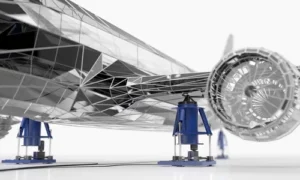
Pneumatic Isolators for Aerospace Testing
The aerospace industry has long used pneumatic isolators to test the structural integrity of aircraft. Pneumatic isolators can simulate in-flight environments to accurately assess an aircraft’s safety during aerospace testing.
Ground vibration testing (GVT) is an important component of aerospace testing. Using pneumatic isolators, a Soft Support System hoists the large aircraft from the ground and reduces outside influence from vibration. During GVT, the pneumatic isolators create a free-free environment to test for several key features.
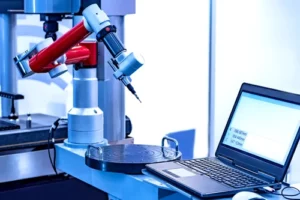
Pneumatic Isolators for Precision Tools
Metrology, of course, is an industry and practice that relies on accuracy and reliability. The degree of precision required for precision machine tools is ever-increasing. Precision equipment operates down to the smallest scales, and without proper isolation, it can lead to inaccuracy and errors.
Pneumatic isolators reduce the influence of external vibration. Through a complete system, the pneumatic isolators maintain the designed accuracy of equipment by isolating the device from the rest of its environment. For proper cuts, turns, polishes and microscopic alterations, pneumatic isolators create the ideal vibration-free environment for these processes.
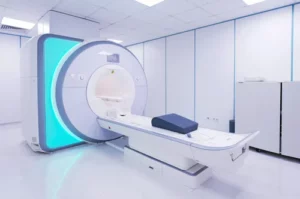
Pneumatic Isolators for MRI Equipment
To further demonstrate the wide range of applications for pneumatic isolators, we turn to the medical industry. Like precision machine tools, medical equipment also requires environments to operate that are free from any variables that interrupt the equipment’s process. The sensitivity of MRI equipment in particular makes them susceptible to vibration.
In this case, pneumatic isolators work as part of a system to isolate the MRI equipment from the surrounding environment. The pneumatic isolators ensure that vibration does not influence the results of scanning by eliminating “ghosting” or double images.
Pneumatic Isolators for Low Frequency Vibration Isolation
As you know, pneumatic isolation spans across industries for accurate testing and vibration isolation for a variety of industries. Fabreeka’s pneumatic isolators and vibration isolation solutions are trusted by professionals across industries. Coupled with excellent customer service, our line of pneumatic isolators makes for an ideal solution no matter your application or industry.
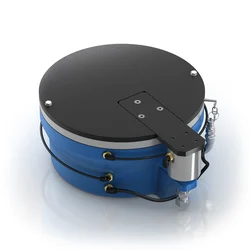
Precision Aire™ PAL Isolator
Ideally suited for conditions requiring height control and vibration isolation, Fabreeka’s Precision Aire leveling PAL pneumatic isolator provides superior low frequency vibration isolation. Using automatic leveling membrane air springs, the PAL pneumatic isolator comes as part of a system of at least three master isolators for three-point control.
Included in each system is an integrated level-control valve that includes a load sensor and height control. To support the weight of the device, any number of pneumatic isolators may be added to the solution. Each system comes with a control unit, automatic level control valves, pneumatic tubing and other accessories needed for a complete system.
Fabreeka’s PAL pneumatic isolators are commonly used across industries and are hailed for their versatility from the aerospace industry to automotive testing. With a vertical natural frequency range of 1.5 to 2.7 Hz, and support for payloads up to 100,000 lbs per isolator, it’s easy to see why.
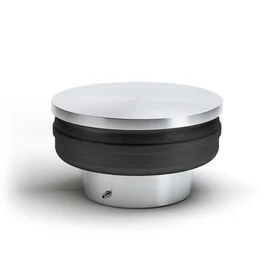
Rolling Lobe Aire Isolator
Also part of our product portfolio, RLA isolator provides low frequency vibration isolation for applications that require high dynamic vibration amplitudes and lifting heights. The rubber air springs give the pneumatic isolator natural frequencies from 0.6 Hz and can support payloads from 7,700 to 69,300 lbs. per isolator.
Built to withstand a variety of environments, the RLA isolator is resistant to most oils, alkaline or acidic cleaning agents, dust, dirt, ozone, UV radiation and general weathering. These properties make the RLA isolator an excellent choice for a vibration isolation system no matter what industry you represent.
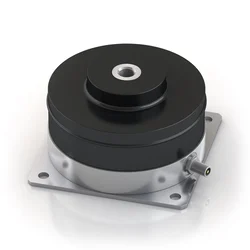
PLM Air Spring Isolator
Last in our line of pneumatic isolators is Fabreeka’s PLM isolators. These pneumatic isolation mounts are built for low-frequency vibration and shock isolation. Additionally, the PLM isolators reduce unwanted vibration while also leveling the devices they support.
Highly adaptable, air springs with pneumatic screw connections are connected to the respective air supply to ease pressurization and leveling. When pressurized, the PLM air springs can isolate frequencies as low as 5hz. Moreover, the PLM isolator can also be used unpressurized depending on your application.
Serving a wide variety of industries, Fabreeka’s pneumatic isolators come as part of a complete system that work to isolate devices from vibration. We strive to help our clients achieve accurate results, and our engineering team works directly with you to develop a custom, ideal solution for your needs.
If you enjoyed this article and would like to learn more about Fabreeka, subscribe to our blog today to read more articles like this one!

